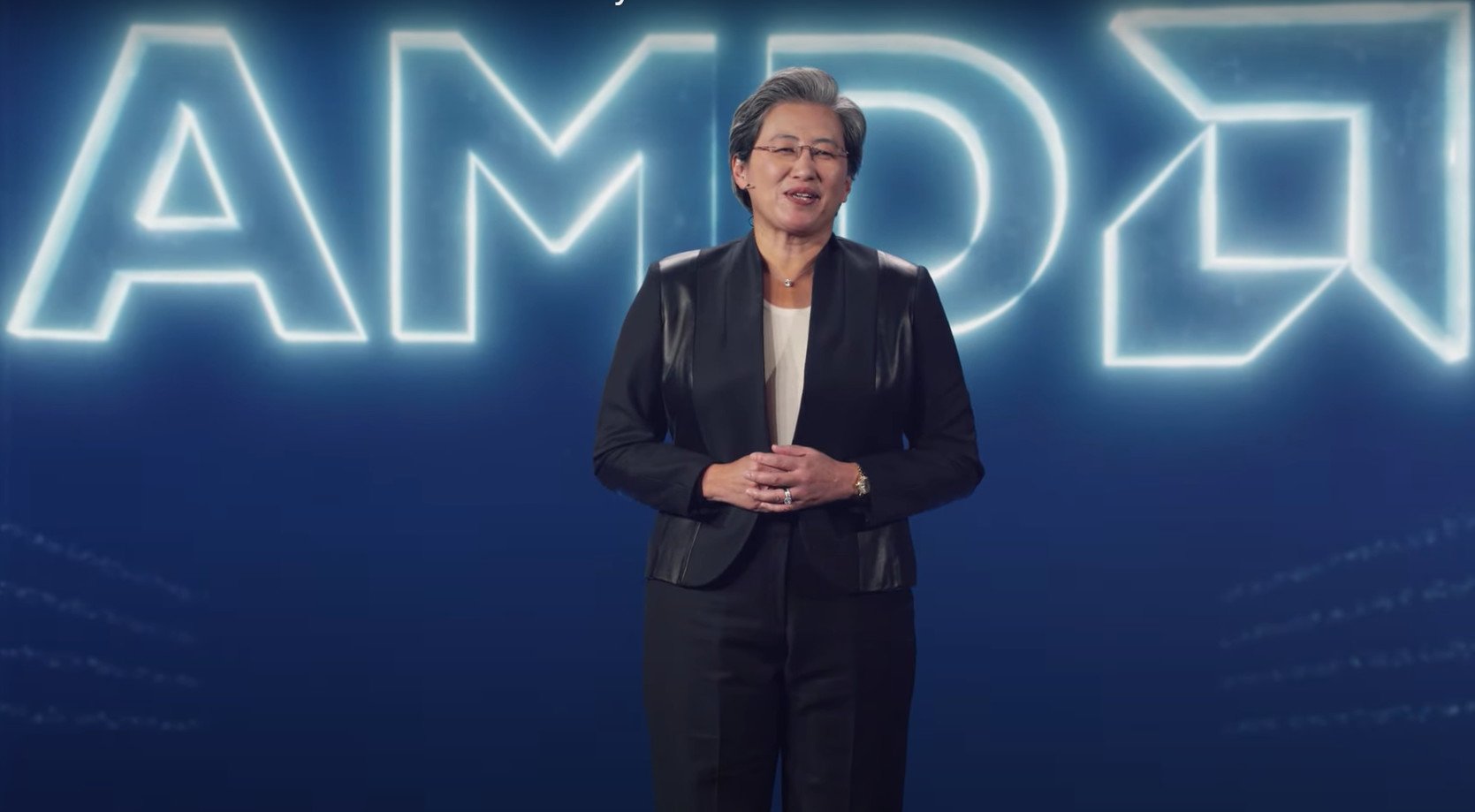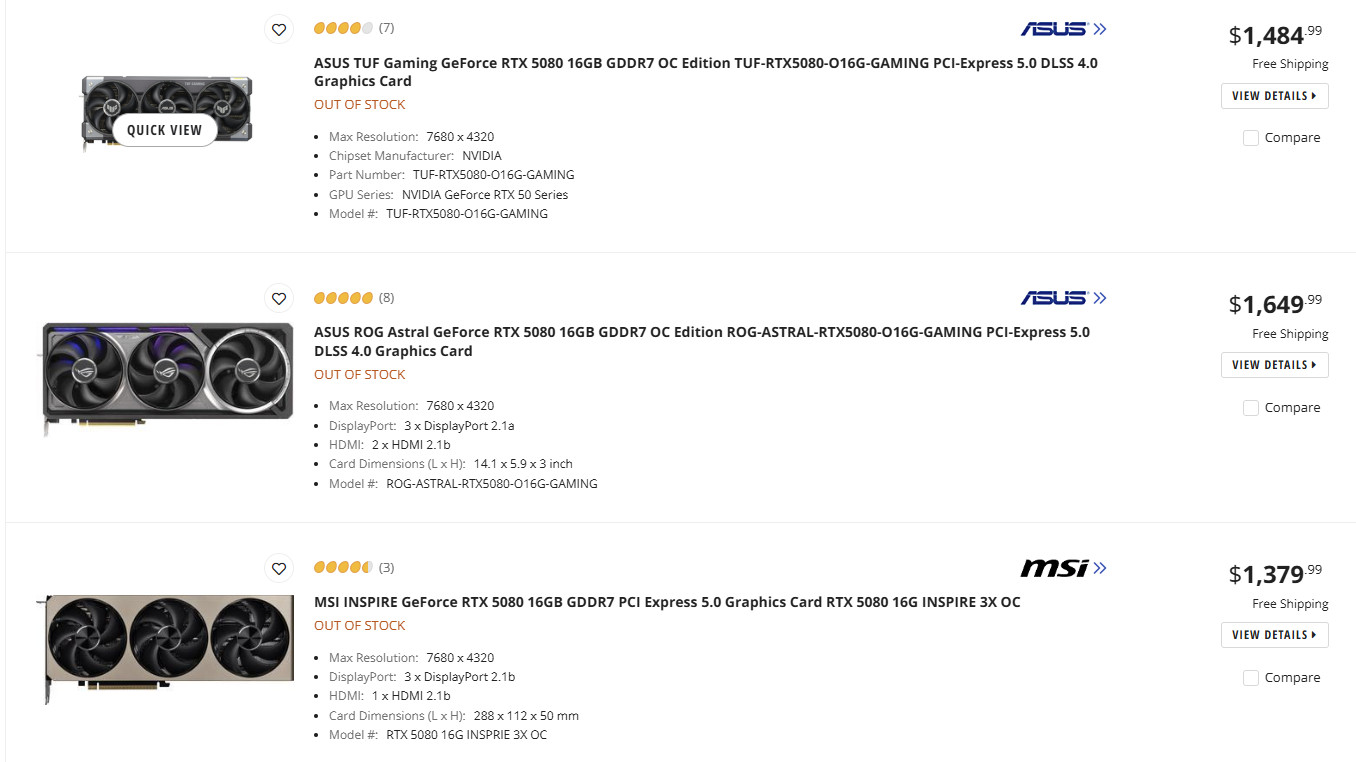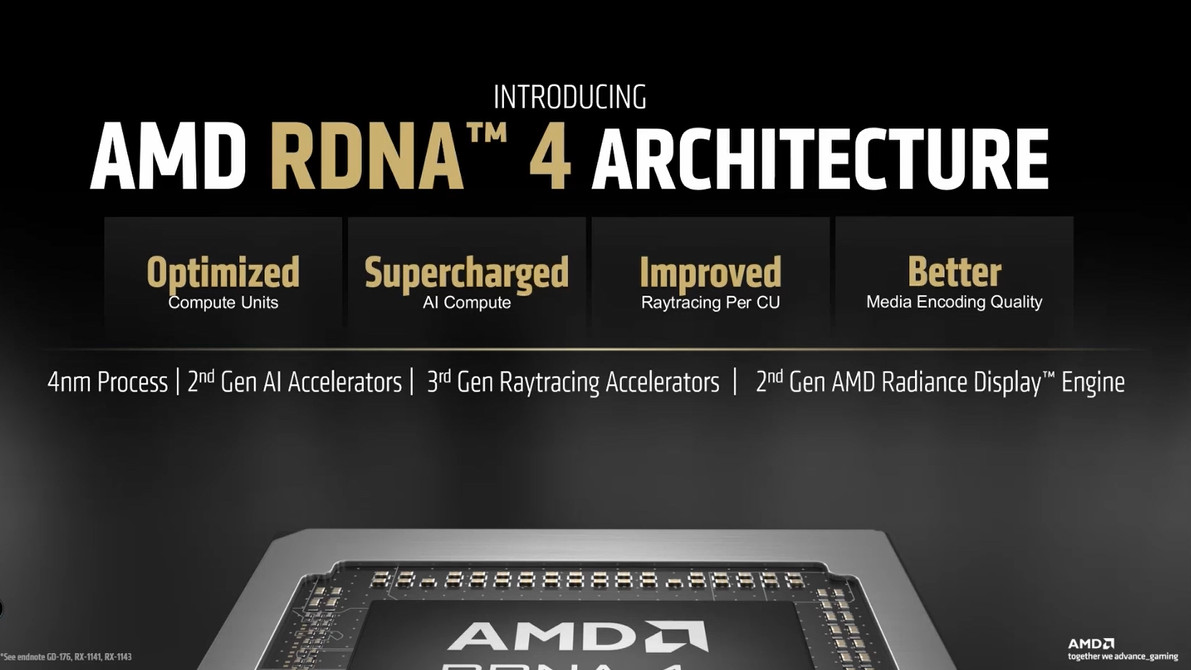
The wait for AMD's new RDNA 4 graphics cards is nearly over. David McAfee, Corporate VP and GM at AMD, recently stated on X (formerly Twitter) that his team is busy preparing the official reveal of new Radeon RX 9000 Series GPUs; it's expected to happen on February 28 at 8 AM EST. Furthermore, McAfee reaffirmed that the Radeon RX 9070 XT and RX 9070 are expected to officially launch in "early March."
The wait is almost over. Join us on February 28 at 8 AM EST for the reveal of the next-gen @AMD Radeon RX 9000 Series. Get ready to make it yours when it hits shelves in early March. RSVP by subscribing to the AMD YouTube channel: https://t.co/4rkVxeoDIaFebruary 13, 2025
After weeks of delays — the RDNA 4 reveal was originally supposed to happen at CES 2025 but was pulled for reasons related to timing and NVIDIA's own RTX 5000 reveal — it seems like AMD is finally ready to give gamers another option when it comes to high-end desktop graphics.
The reveal really can't come soon enough. NVIDIA hasn't had an easy go with its "Blackwell" GPU launch. Minimal availability had scalpers already listing insane prices before the RTX 5090 and RTX 5080 even launched. Raw performance gains weren't nearly as impressive as expected, with the new NVIDIA GPUs relying heavily on DLSS 4 to boost performance with what many are calling fake frames — aka those that are rendered using AI.
Slightly more serious is an issue involving faulty drivers released alongside the RTX 5000 cards, causing black screens and unrecognizable hardware. The most damning, though, is the tendency for NVIDIA's most power-hungry card, the RTX 5090, to draw so much power that it's melting power cables, PSUs, and the GPUs themselves.
AMD has the perfect opportunity to claw back a significant chunk of the GPU market with its upcoming RDNA 4 hardware. Gamers and enthusiasts are eager to upgrade, but that doesn't mean that AMD can't release a sub-par product. I'm a longtime AMD user and am generally satisfied with its products (especially its gaming CPUs like the Ryzen 7 9800X3D we reviewed), but Team Red has a bit of a reputation for unsatisfying product launches.
I sincerely hope the RDNA 4 reveal on February 28 goes off without a hitch. NVIDIA needs strong competition in the GPU market to keep it honest. However, I'm imagining five ways AMD can fumble the RDNA 4 GPU launch.
1. No RDNA 4 stock to sell at launch

The last thing the GPU market needs is more opportunities for scalpers to take advantage of limited stock. If AMD can't come out of the gate with high numbers at major retailers, the rest of this list is effectively moot, as no one will be able to get the hardware anyway.
Get the Windows Central Newsletter
All the latest news, reviews, and guides for Windows and Xbox diehards.
Good news. Rumors have it that AMD has been busy bolstering its stock since early January, when the original RDNA 4 reveal was supposed to happen. That gives it roughly two months of production and shipping as a head start, which should translate into plenty of options on launch day.
I'm still expecting to see most retailers sell out on launch day or shortly after. That's the reality when new GPUs are in such high demand. The RTX 5000 series won't be out of stock forever, so AMD needs to capitalize early with a steady supply of restock shipments if it hopes to compete.
2. Uncompetitive RDNA 4 pricing

A bit part of AMD's RDNA 4 mystery is pricing, but some recent leaks and rumors have given me an idea of what the RX 9070 XT and RX 9070 will cost at launch. Videocardz picked up a leak from X user momomo_us, in which XFX Swift Radeon RX 9000 GPUs were briefly listed at Amazon.
https://t.co/qvqVjmZhf8February 15, 2025
Nothing is confirmed as being true, but it looks like the Radeon RX 9070 could start as low as $649, with the RX 9070 XT coming in at $100 more than its sibling. These are, of course, XFX's Swift, Mercury, and Quicksilver prices, so they don't exactly represent MSRP.
In another leak found by Videocardz originating from the AnandTech forums and user Tomasz Gawroński, Canada Computers listed a bunch of RDNA 4 GPUs from PowerColor and XFX. With the CAD to USD exchange rate undoubtedly adding some wonk, it appears that the non-XT RX 9070 will start at around $586, with the XT version starting at about $697.
It's expected that the Radeon RX 9070 XT will align with the RTX 5070 Ti ($749 MSRP), while the RX 9070 will align with the RTX 5070 ($549 MSRP). It's important to point out that the MSRP is only for the Founders Edition of the GPUs, with custom cards from third-party builders coming in at higher prices.
Nevertheless, it looks like AMD's pricing could be higher than NVIDIA's. That's a situation I've seen play out before, and I hope AMD doesn't make the same mistake with RDNA 4.
3. Poor RDNA 4 ray tracing performance

AMD's ray tracing capabilities have never been on par with NVIDIA's, with Team Red playing catch-up for years. But with modern games relying more and more on ray tracing to illuminate games, it's no longer a problem that AMD can ignore. Not having strong ray tracing abilities will undoubtedly hamper AMD's success.
I'm not asking for any miracles here. RDNA 4 ray tracing should be better than RDNA 3, but by how much remains to be seen. If AMD is truly hoping to launch its GPUs with a higher price than NVIDIA, it had better have some notable improvements to better compete with Team Green.
4. Poor FSR 4 performance
AMD's FidelityFX Super Resolution (FSR) is akin to NVIDIA's DLSS; both are upscaling techniques that provide more frames than the raw hardware could produce on its own. FSR 3.1 is the latest standard, relying on advanced spatial upscaling algorithms to perform its magic.
That's expected to change with FSR 4, which AMD now says is based on machine learning. That's a big step toward truly competing with NVIDIA's DLSS, which has so far proven to be the superior technology and will only get better as Multi Frame Generation reaches its full potential.
Not a lot is known yet about FSR 4, but Hardware Unboxed has a great video looking at the differences. From the brief analysis, it looks like FSR 4 has solved some of FSR 3.1's issues rendering smaller high-quality details in fast-moving scenes.
If AMD can wow us with FSR 4 at its February 28 reveal, I know it will seal the deal for plenty of potential customers.
5. Not enough VRAM

Indiana Jones and the Great Circle is a stellar game, but its launch highlighted a growing issue for GPUs. NVIDIA's RTX 4060, with 8GB of VRAM, notably struggles to run the game at a high framerate. It's even bested by the older RTX 3060, and its 12GB of VRAM.
NVIDIA claims that it's solved some of the VRAM problems with DLSS 4, which relies less on VRAM and more on Tensor cores to achieve desirable frame rates. However, 12GB and 16GB of VRAM for the RTX 5070 and RTX 5070 Ti, respectively, continue to not sit well with everyone.
Judging by some of the leaks I've already mentioned, it appears that both the RX 9070 and RX 9070 XT have 16GB of VRAM. That's a good sign, and I hope it to be true. The 16GB of VRAM in my RX 6800 has treated me well over the years, and I don't want to buy a GPU with less for the next generation.
Wrapping up
Many of my most pressing questions will, hopefully, be answered on February 28 when AMD finally hosts an official reveal of its RDNA 4 GPUs. Whether you're a fan of Team Green or Team Red, I think we can all agree that there needs to be more competition in the GPU market to keep everyone honest.
I'm certain I missed a point or two on how AMD can screw up its RDNA 4 GPU launch, and I'd love to hear in the comments section what you think about the upcoming reveal.

Cale Hunt brings to Windows Central more than eight years of experience writing about laptops, PCs, accessories, games, and beyond. If it runs Windows or in some way complements the hardware, there’s a good chance he knows about it, has written about it, or is already busy testing it.
You must confirm your public display name before commenting
Please logout and then login again, you will then be prompted to enter your display name.

